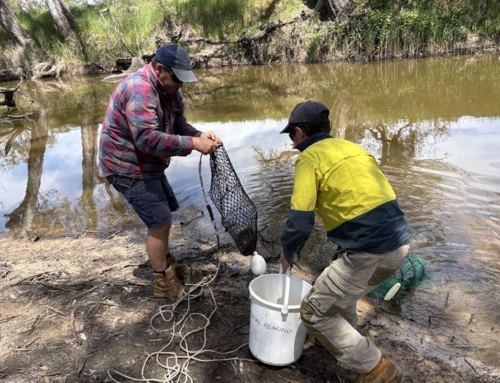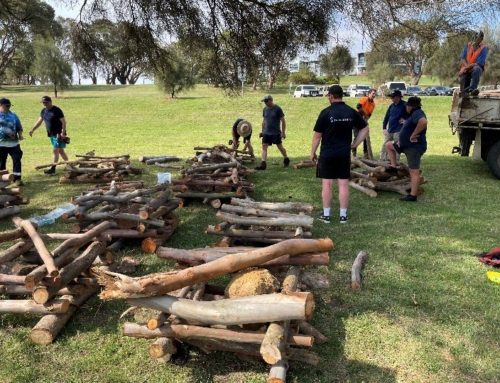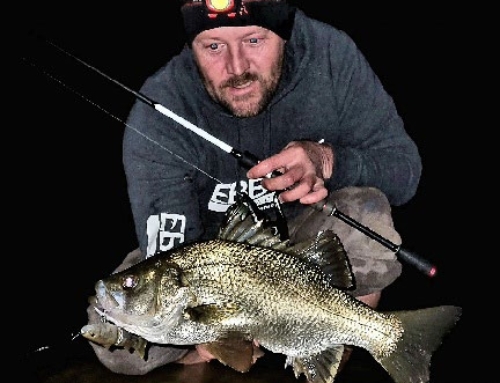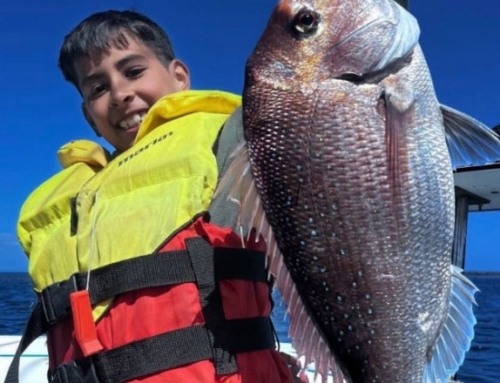Robbie Waller selects his top 10 Tassie waters for kayak anglers to explore.
Kayak anglers unfamiliar with the Apple Isle could be forgiven for thinking they could cover most of Tasmania’s kayak fishing options within a couple of weeks. It is, after all, a relatively small state.
But there’s fresh and saltwater at every turn, as rivers, lakes, estuaries and offshore kayak fishing options flourish like Granny Smiths thriving on a tree in spring.
So where does a curious mainlander begin to pencil in their Tasmanian kayak fishing experience? And what prior knowledge is needed? With a half dozen Tasmanian kayak fishing trips under my belt, I’m happy to suggest my top 10 waters worth prospecting.

Calm days are to be taken
PLANNING
Small craft anglers hitting Tasmania via the Spirit of Tasmania first need to consider Australian Interstate Quarantine rules. Obliging the concerns of the Tasmanian Department of Primary Industries, Parks, Water and Environment (A.K.A. Biosecurity Tasmania) is a requirement. From a fishing perspective, no live bait or fish products are allowed to enter the state. Kayaks and kayak fishing gear need to be thoroughly rinsed down (washed with detergent preferably), and dried. You may be asked to unscrew a bung plug when travelling by ferry, as this shows no water is present within sit-on-top kayaks. Contact details are: Ph. 03 6165 3777, Email quarantine.enquiries@dpipwe.tas.gov.au, or www.dpipwe.tas.gov.au/biosecurity.
Becoming familiar with Marine and Safety Tasmania (MAST) kayak regulations is also a kayak angling need. Equipment requirements for smooth, sheltered and coastal waters are provided. MAST are very much aware of how remote Tasmanian geography and weather conditions can quickly turn a kayak fishing expedition into disaster, and how to best prepare for the unexpected. In addition to equipment necessities, MAST provides kayakers with handy fishing trip preparation hints. Contact MAST: Ph. 03 6235 8888, Email via MAST website http://www.mast.tas.gov.au/contact/, or www.mast.tas.gov.au.
Saltwater rod and reel fishing does not require a license in Tasmania, although alternate fishing methods for species such as scallops and crayfish do require a license. Check with the Tasmanian Department of Primary Industries, Parks, Water and Environment if you’re not fishing with rod and reel in the salt.
All freshwater options do require a license, and these are managed via the Inland Fisheries Service (IFS). Rules for freshwater open season, catch limits, size limits and fishing method (bait, lure or fly fishing) are not universal across Tasmania’s freshwater options. Instead each water holds its own regulations. So being informed before hitting a specific river or lake is paramount. Contact Inland Fisheries Service: 03 6165 3808, Email infish@ifs.tas.gov.au, or www.ifs.tas.gov.au.
Information on some lake water levels can be accessed via the Hydro Tasmania website. Not all Tasmanian lakes are covered, but a high number are managed for power generation. See www.hydro.com.au/water/lake-levels.
Finally, accessing some Tasmanian waters requires the purchase of a Holiday Vehicle Parks Pass if located inside a National Park. Parks Passes are available on the Spirit of Tasmania if needed. Again check with the Tasmanian Department of Primary Industries, Parks, Water and Environment.
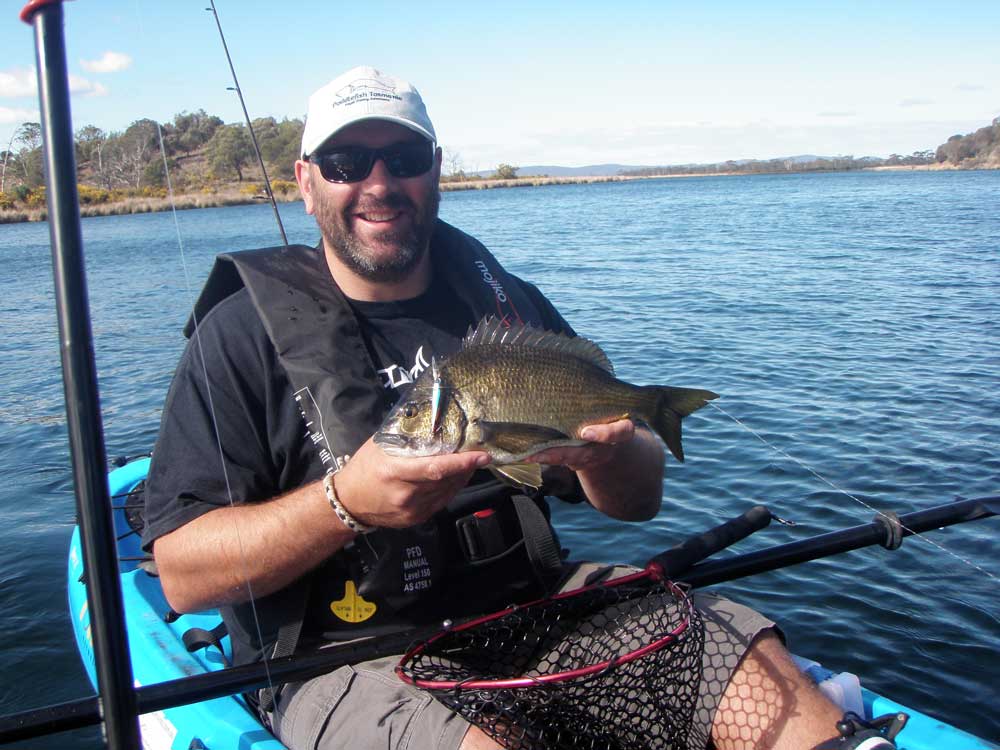
Black bream are as cracking targets species
TASSIE’S 10 PRIME WATERS
When it comes to kayak fishing waters, Tasmania has some belters. In no particular order, here are my favourites.
LAKE BARRINGTON
Only 36 km away from Devonport, and easily accessible for either a first up or last fish before travelling on the Spirit of Tasmania, lies Lake Barrington. Lake Barrington is around 20 km long, narrow and deep. It’s also an ideal sheltered paddle when the wind begins to howl. Barrington boasts a rowing course and some stunning scenery. It also boasts rainbow and brown trout, as well as occasional stockings of cracking size Atlantic salmon up to 6.5 kilograms.
It’s one of the few places when trolling in Tasmania that a kayak angler could consider presenting at depth. A couple of alternatives for getting presentations deeper are a small Fish Seeker paravane made by Davis, or an instant downrigger made by Redi Rig.
Season: Open all year
Methods permitted: All methods Bag limit:
Total daily bag limit of 5 fish is for all species with 2 fish over 500mm.
Size Limits: Atlantic salmon min size 300 mm/500 mm (2 fish allowed over 500 mm)
Brown trout min size 300 mm/500 mm (2 fish allowed over 500 mm)
Rainbow trout min size 300 mm/500 mm (2 fish allowed over 500 mm)
 PIEMAN RIVER
PIEMAN RIVER
For some West Coast wilderness, reach out a paddle blade for a dip in the Pieman River. The Pieman is serviced by the small village of Corinna, and a ferry called the Fatman. Downstream, the ocean is around a 13 km paddle, while the Reece dam lies upstream. Most likely catches will be resident brown trout under a kilogram; however sea run trout taken from September to December can average around two kilograms. Some rare sea monsters also lurk, and have been taken in the nine kilogram range. Despite this, the Pieman River will most likely be about the places it takes you rather than the kayak fishing itself.
Season: Brown trout season 1st Saturday in August to Sunday closest end of April
Methods permitted: All methods
Brown trout bag and size limit: Total daily bag limit of 12 fish with minimum size 220mm
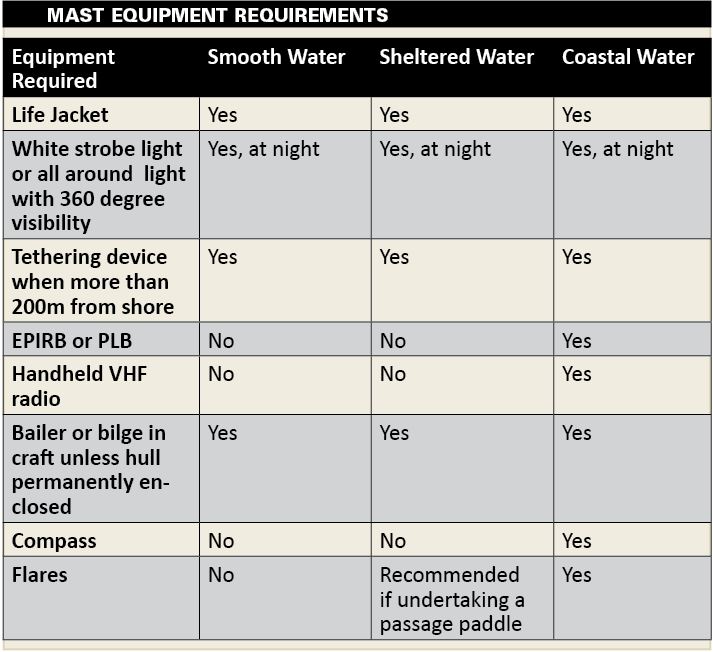 LAKE BURBURY
LAKE BURBURY
Hedged by mountains, and around 10 km of winding roads from Queenstown sits Lake Burbury. Burbury was formed by damming the King River in the early 1990s and the Darwin Dam sits at the southern end of the lake. Picturesque islands dot the water and they beckon a kayak anglers’ body in need of lunch and a stretch.
The Anglers Alliance of Tasmania run a webcam for Lake Burbury, which can be checked online at http://anglersalliance.org.au/web-cams/lake-burbury-webcam/. Often windswept, Lake Burbury is in modern times noted for its natural recruitment of brown and rainbow trout stocks.
Season: Open all year
Methods permitted: All methods
Bag Limit: Total daily bag limit of 20 fish is for all species combined
Brown trout size limit: 220 mm
Rainbow trout size limit: 220 mm

The lure of Tasmania sees kayak anglers returning
LAKE PEDDER
Lake Pedder was big news once upon a time. After flooding the Serpentine River with the Serpentine, Edgar and Scotts Peak Dams, glory days existed in the mid to late 1970s where brown trout averaged around 4.5 kg and thumpers of 10 kg also existed. Today food supplies have stabilised and brown trout are generally under a kilogram. Kayak anglers shouldn’t let that deter them though. If the weather conditions cooperate a good day on Lake Pedder is as good as the Tasmanian scenery gets. Resident platypus offer a bonus sideshow, and those keen on competition could do well to look at the Lake Pedder Angling Club’s Australia Day tournament.
Season: Open all year
Methods permitted: Artificial (lures and flies) only
Bag Limit: Total daily bag limit of 20 fish
Brown trout size limit: 220 mm
D’ENTRECASTEAUX CHANNEL
A saltwater option where rivers such as the Huon, Lune and Esperance terminate, the D’Entrecasteaux Channel extends around 100 km separating Bruny Island and greater Tasmania. Bruny Island offers fantastic protection against swell; however the Channel can still experience significant wind chop.
Squid, flathead, sea run trout, Australian salmon, and silver trevally are all possibilities. The Channel is a shark nursery, making it illegal to fish for shark species including gummy and school shark. Launching from Tinderbox or Snug, it’s also possible to round Dennes Point to the experience Storm Bay fishing outside the Channel.
Saltwater size, bag and possession limits: Refer Tasmanian Department of Primary Industries, Parks, Water and Environment website www.dpipwe.tas.gov.au/sea-fishing-aquaculture.
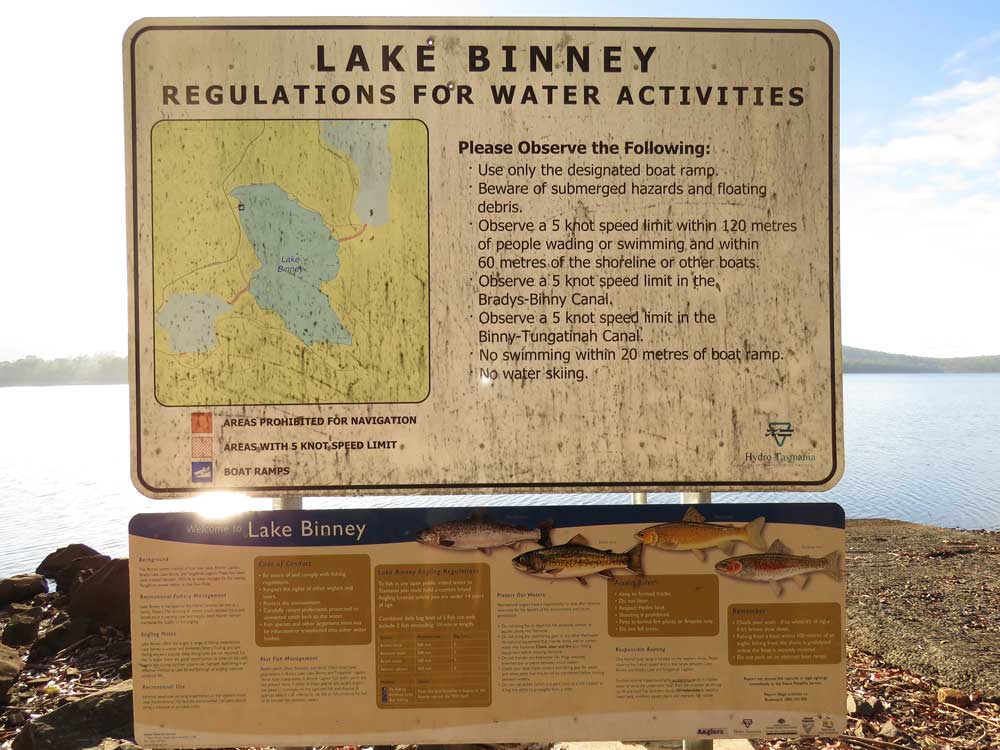
Lake Binney holds Atlantic salmon and more
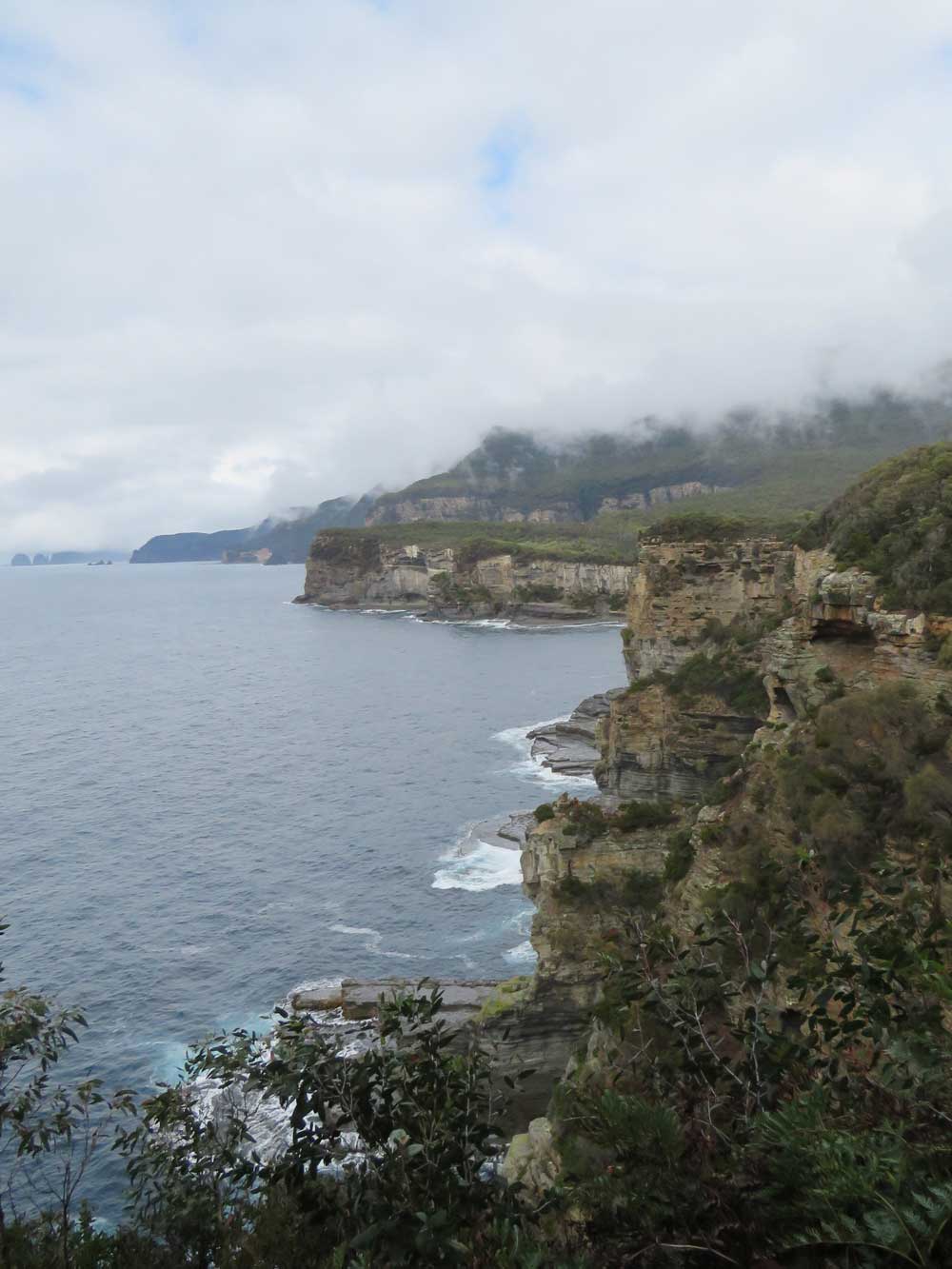
The coastline near Fortescue Bay
FORTESCUE BAY
Approximately 20 km from Port Arthur lies Fortescue Bay, another saltwater option. Fortescue Bay offers kayak launching from either a small concrete boat ramp or a more preferable launching location directly off a sandy beach. Australian salmon, flathead and squid are possible within the bay itself, but the big draw card is the chance at southern bluefin tuna just outside Fortescue Bay from December to April. South of the entrance, Cape Huay and the Munro Bight beckon. Paddling north, the Ohara Bluff is prominent, as are the Hippolyte Rocks around nine kilometres out to sea, where beast size tuna are taken.
Weather conditions need to be on your side for this kayak fishing expedition, and all safety measures should be catered for as the Tasman Sea can get very ugly, very quickly. If Fortescue Bay takes your interest, a good source of information is the Tuna Club of Tasmania Facebook page.
Bluefin Tuna Bag and Possession Limit: 2 (no size limit) refer www.dpipwe.tas.gov.au/sea-fishing-aquaculture/recreational-fishing/catch-limits/size-limits
ARTHURS LAKE
Arthurs Lake, located in the Central Highlands holds an iconic status for Australian trout anglers. It returns good numbers of brown trout compared to alternate waters, and anglers will often find their catch rates are better at Arthurs Lake. Arthurs Lake wild brown trout are beautifully marked, and are in top condition with a deep orange flesh if being introduced to a dinner plate.
At 952 m above sea level Arthurs Lake can experience severe cold conditions, and as with all Tasmanian waters, appropriate paddling clothing is a necessity. Several islands including Hawk, Brazendale, Neil, and Jenkins offer the chance for a break and/or cover. Nearby, the Great Lake adds the possibility of rainbow trout as well as browns, but regulations differ.
Season: Brown trout season 1st Saturday in August to Sunday closest end of April
Methods permitted: All methods
Bag Limit: Total daily bag limit of 12 fish
Brown trout size limit: 220 mm
BRADY’S CHAIN OF LAKES
Another Central Highland water of note to kayak anglers is the Brady’s Chain of Lakes: Lake Brady, Lake Binney and Tungatinah Lagoon. If the Central Highland wind is exacting a price, these smaller canal linked waters offer a more placid alternative.
Brown trout have dominated recent IFS stocking efforts, however the Brady’s Chain of Lakes have a rich history of also receiving rainbow trout, Atlantic salmon and brook trout. Given redfin are also present, lures that carry a redfin like pattern can offer a fantastic starting point if artificials are adopted. Summer beetle hatches are also a feature of fishing the Central Highland lakes.
Season: Salmonid season 1st Saturday in August to Sunday closest end of April
Methods permitted: All methods
Bag limit: Total daily bag limit of 5 fish is for all species with 2 fish over 500 mm
Size Limits: Atlantic salmon min size 300 mm/500 mm (2 fish allowed over 500 mm)
Brook trout min size 300 mm/500 mm
Brown trout min size 300 mm/500 mm (2 fish allowed over 500 mm)
Rainbow trout min size 300 mm/500 mm (2 fish allowed over 500 mm)
SWAN RIVER
With apologies to the Derwent, Scamander, Lune and Esperance Rivers, as well as more Tasmanian waters, the Swan River is a highlight for kayak bream seekers. Gard Saxon wrote a terrific guide of the Swan River in Yak Fisher Issue 33, a piece well worth returning to if thumping black bream catch your imagination. If the Hobie ABT Kayak Series has the Swan River on its radar, it’s for good reason.
Black bream bag limit: 5 black bream
Size limit: 25 cm
BINGALONG BAY
Bingalong Bay provides another Tasmanian offshore kayak fishing option, only a few minutes’ drive from St Helens. A small boat ramp is present. St Helens lays claim to being the game fishing capital of Tasmania, so any number of hefty species are possible. Nearby Elephant Rock juts out from the Humbug National Park, and can hold kingfish. Georges Bay can be a great alternative for Australian salmon, black bream and silver trevally and more if conditions don’t allow offshore ventures.
Saltwater size, bag and possession limits: Refer Tasmanian Department of Primary Industries, Parks, Water and Environment website www.dpipwe.tas.gov.au/sea-fishing-aquaculture.
THAT’S A WRAP
Australia’s southernmost state is a corker for kayak fishing travel. Fish holding water seems to invite a paddled hook at every turn of the road, and a lifetime could be spent just touching upon great places to fish. Freshwater alternatives are well looked after by the Inland Fishing Service and by many standards estuary and offshore alternatives are chock full of fish. With some careful planning, a keen on eye on the variable weather and a thoughtful approach to catering for safety measures, Tasmania proves the point time and again that it’s a kayak fishing paradise.
Robbie was born and raised on Victoria’s West Coast where old style wooden barracouta later turned crayfish boats were plucked up onto piers after each journey. He’s been an enthusiastic kayak angler for over 10 years, and Robbie gets a big kick from helping define the techniques and gear that are suited to the evolving sport of kayak fishing.


